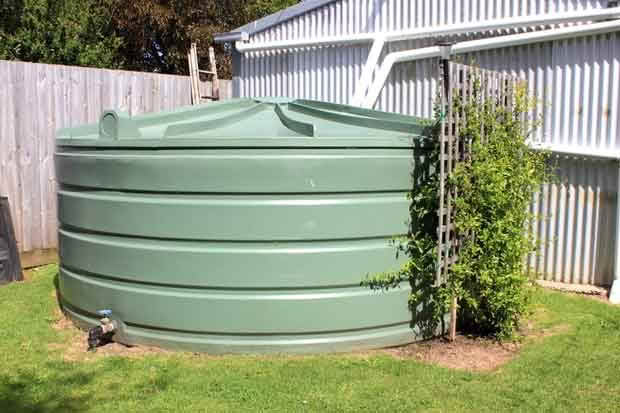How to clean your water tanks

Winter is the ideal time to clean your water tank.
Words: Nadene Hall
If your water tank collects the rain that falls on your roof, you will have contamination of some kind in an unprotected water tank. Dirt and dust, leaves, animal droppings, and other substances will settle in the bottom of a water tank over time.
Research by the Auckland Public Health Protection Services showed over half the collections of drinking water from roofs involved in a pilot study contained contaminants from faecal matter such as salmonella, campylobacter, E coli and giardia.
You can install devices on spouting that diverts the ‘first flush’ (40 litres or so) of rain away from your tank, before allowing it to fill as normal, which washes away most debris and dust. There are also siphon systems that will suck debris up and out of the overflow pipe, working for your all year round.
However, even if you have this kind of system, it’s a good idea to have your tank cleaned, ideally twice a year. Winter is an ideal time because you’re more likely to get it quickly refilled with rain.
We strongly recommend you hire a contractor to do this work. If you choose to do it yourself, make sure you have an assistant who can help you (who is outside the tank and has a spare ladder), and be very cautious of airflow and ventilation. Don’t use chemicals as you can be easily overwhelmed by them in such a confined, airless space.
Note, you need to have narrow hips to fit through the entry trapdoor.
You will need a stiff-bristled brush and a broom. Wear a respirator, gloves, something over your legs and arms, gumboots, and eye protectors. Don’t stay inside a tank for long periods, and ideally stick your head out the trapdoor for fresh air every so often.
Turn off your pump. Empty the tank until there’s around 1000 litres or so in the bottom. Scrub the bottom and walls, then remove the sludgy water and rinse it out until clean. You may be able to use a broom to push the watery sludge out of the bottom through a scour valve (if your tank has one) or you will need a wet vacuum system or pump to suck it out. While it’s draining, continue to rinse any debris off the sides of your tank.
Refill your tank. Either use pre-treated water (eg, town supply) or add a water sterilisation product.
OTHER WAYS TO KEEP YOUR WATER AND TANK CLEAN
– make sure the paint on your roof is lead-free. If you are repainting, make sure there is a sign on the label that says it is suitable for a water supply.
– an uncoated metallic roof can react with rainwater, which tends to be slightly acidic, causing leaching so you will need to have it painted.
– underground pipes are difficult to clean so it can pay to keep your tank as close to the roof as possible. If you do use pipes underground, make sure it has a constant gradient so water can’t sit in one spot.
– Make sure there are no trees overhanging your roof.
– Your downpipe should be easily detachable so you can divert water from your tank when you are cleaning or painting the roof.
– If you live on a dirt road or in an area where sprays are often used, you might want to reconsider using the water collected off your roof for drinking.

